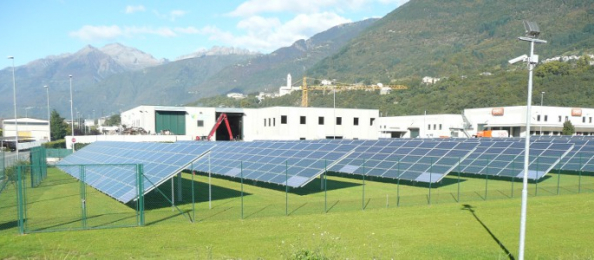Photo: Banca Popolare di Sondrio
A Bank of the Territory for the Territory
Banca Popolare di Sondrio was founded in Sondrio in 1871 and was one of the first Italian banks inspired by the popular cooperative banking movement. Thanks to the gradual extension of its activities and territorial presence, over the years the bank has taken on a supra-regional dimension, with extensive operational abilities throughout Italy, while maintaining a strong link with its area of origin.
The expansion and intensification of the network of branches have been key tools through which the bank has fueled significant progress in dimensional and operational growth. For Banca Popolare di Sondrio, its rootedness in individual local entities is not a passing fad but the result of a conscious decision that has helped to forge its corporate nature and determine its organizational strategy. In summary, it can be said to be a bank of the territory and a bank on the territory.
Its focus on the territory is expressed not only through the range of banking and financial products that meet the needs of the customers living there, but also in its close proximity to the local populations as well as its social, charitable, mutual, and environmental initiatives.
In recent years, the continuous opening of branches, which has currently led to more than 340 branches with approximately 2,700 employees, has gone hand in hand with the bank’s increasing focus on environmental and ecological issues – being well-aware of the impact that banks can have on their surrounding environments.
Its energy-efficiency and energy-production policy from renewable sources has been specifically developed through the following major activities:

• Buying energy from renewable sources (with Certificate of Origin):
A total of 12,475 GWh of 100 percent renewable-certified electricity with guarantees of origin and 1,420 GWh of electricity derived from renewable sources (average renewable share equal to 35 percent of the energy mix) have been purchased on the free market. Total purchase of 100 percent green energy in 2016: 13,895,000 kWh of electricity – resulting in 6,947,500 kg of CO2 saved per year.
• Self-production of electricity from its photovoltaic systems:
At the branches of Berbenno di Valtellina (SO) and Verdellino (BG), systems have been installed that, in 2016, produced a total of 243,180 kWh – equivalent to 121,590 kg of CO2 being saved that year.
• Internal lighting – re-lamping of neon lighting fixtures with LEDs:
Approximately 200 neon lamps were replaced with LED lamps at the branches. Estimated savings: 21,120 kWh/year, which is approximately 10,560 kg of CO2 saved per year.
• Advertising media – LED replacement of neon signs:
28 external neon signs were replaced with new LED lamps. Estimated savings: 28 fixtures x 2.0 kW/fixture x 8 h/d x 365 days/year = 163,520 kWh/year, equal to 81,870 kg of CO2 saved per year.
• Installation of temperature control systems in multi-purpose buildings: Installation of approximately 350 thermostatic valves for temperature control of existing radiators within 60 mixeduse properties (residential/commercial). Estimated savings: 8 to 10 percent in savings on annual consumption by properties.
• Installation of indirect/direct meters for measuring heat: Installation of seven indirect metering systems, 126 direct calorie meters and 90 hot water meters at 31 mixed-use properties (commercial and residential). Estimated savings: reduced consumption due to the sharing of heat expenditure based on the metering quota of consumption for heating/hot water.
• Re-vamping procedures – replacement of frigor systems for heat pumps and condensing boilers: Replacement of 20 frigor systems for heat pumps and three gas boilers to serve branches. Estimated average savings: 188,740 kWh of electricity and 10,000 cubic meters of natural gas per year.
• Operational control of electricity consumption monitoring systems: Installation of 10 new data-loggers for monitoring consumption in branches (10 agencies in the Rome area), in addition to 19 existing active monitoring systems. Estimated savings per new installation: 10 percent savings in consumption, totaling 80,000 kWh/year.
• Control and management of air conditioning systems: Installation of remote control systems and management of air conditioning systems in new branches.
• Control and analysis of consumption based on data read from gas/energy meters and supplier statements: Implementation of a new energy-consumption monitoring platform (gas, electricity) on the corporate Intranet, with the aim of assessing the indices and parameters of actual consumption (actually measured by the devices); comparing the data readings with those for consumption accounted for by our electricity/gas suppliers; highlight anomalies in terms of consumption and/or billing (including the application of taxes).
To complete the framework of environmental strategies adopted by the bank, we can include the use of FSC paper for issuing a number of bank documents, amounting to approximately 9,870,000 envelopes and 14,040,000 A4 sheets, plus 256,000 A4 sheets for promotional material related to Treasury Management.
The FSC (Forest Stewardship Council) is an independent and non-profit international NGO that works to certify the quality and respect of certain standards in forest management. Therefore, it includes among its members environmental and social groups, indigenous communities, industries that process and trade wood, and scientists to improve forest management worldwide.
This label guarantees the quality of the product and the origin of the paper. It is a “third-party” certification, in that the organization defines the standards while certain accredited certification bodies issue the certificate to guarantee transparency, impartiality, and credibility.
The FSC wording therefore ensures that the wood used to produce this paper comes from responsibly managed forests, in compliance with certain environmental standards: It is not, therefore, recycled paper, but paper made with respect for the environment.
These are just the most significant “green” activities that have been implemented in recent years by Banca Popolare di Sondrio, with the aim of contributing to the maintenance and improvement of the environment in which it operates while staying true to the bank’s mission and to Principles 7, 8, and 9 of the UN Global Compact.
Mara Simonini is CSR-Manager at Banca Popolare di Sondrio.
Founded in 1871, the Banca Popolare di Sondrio is one of the first popular Italian banks that was inspired by the popular cooperative banking movement.
Over time and thanks to the gradual expansion of it's activities and presence on the territory, the bank gained more regional dimensions with the possibility of operating nationwide, while at the same time keeping strong ties to the zone of origin.
The bank can offer its customers (families, professionals, small and large companies, public institutions, etc.) services that will satisfy their every banking, financial or insurance need. Alongside their primary banking activity, the bank also promotes cultural initiatives: amongst these stand out, for their prestige and interest, the organisation of events linked to the names of eminent personalities and a refined publishing activity.
About Us // Privacy Policy // Copyright Information // Legal Disclaimer // Contact
Copyright © 2012-2018 macondo publishing GmbH. All rights reserved.
The CSR Academy is an independent learning platform of the macondo publishing group.









